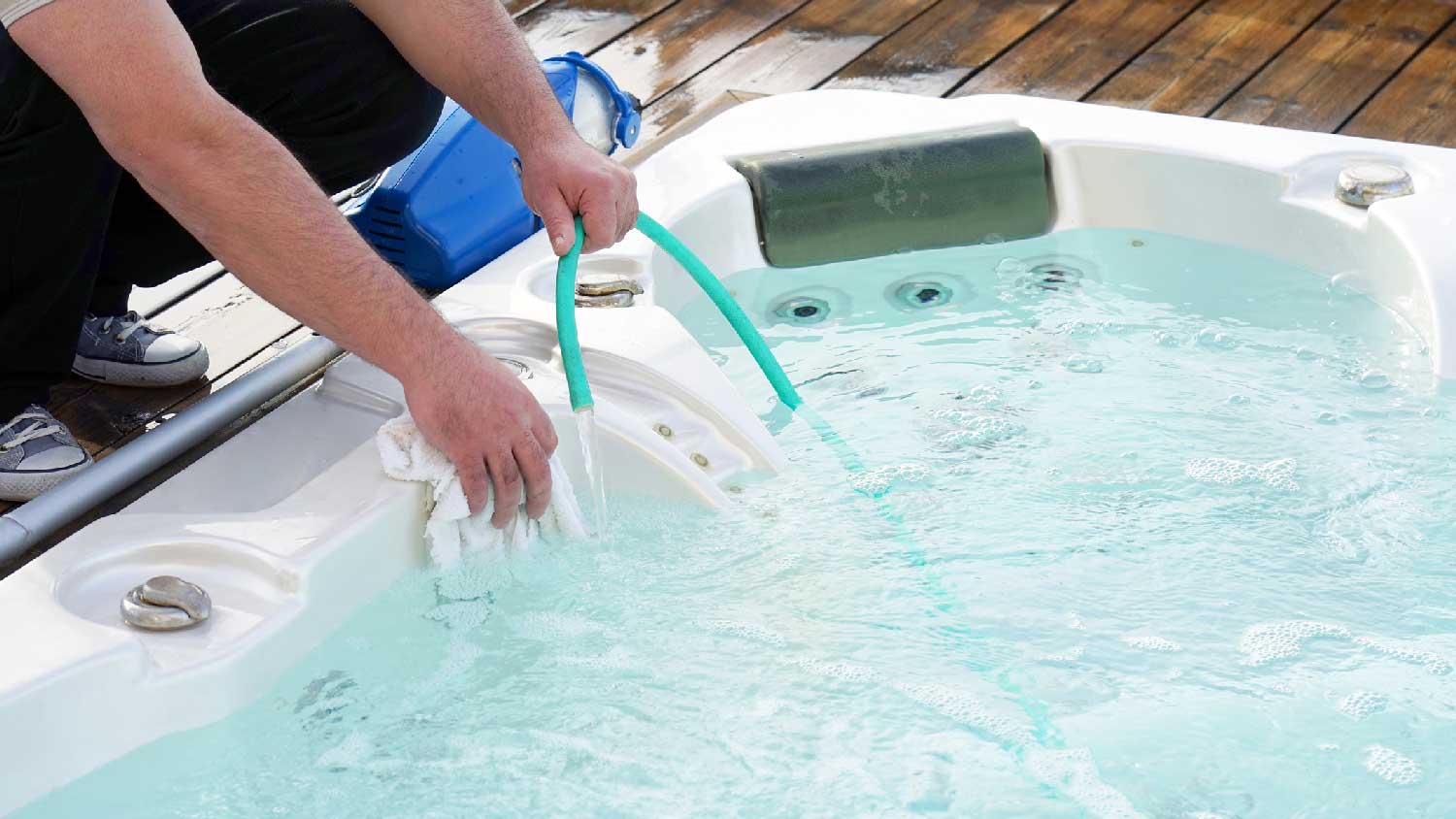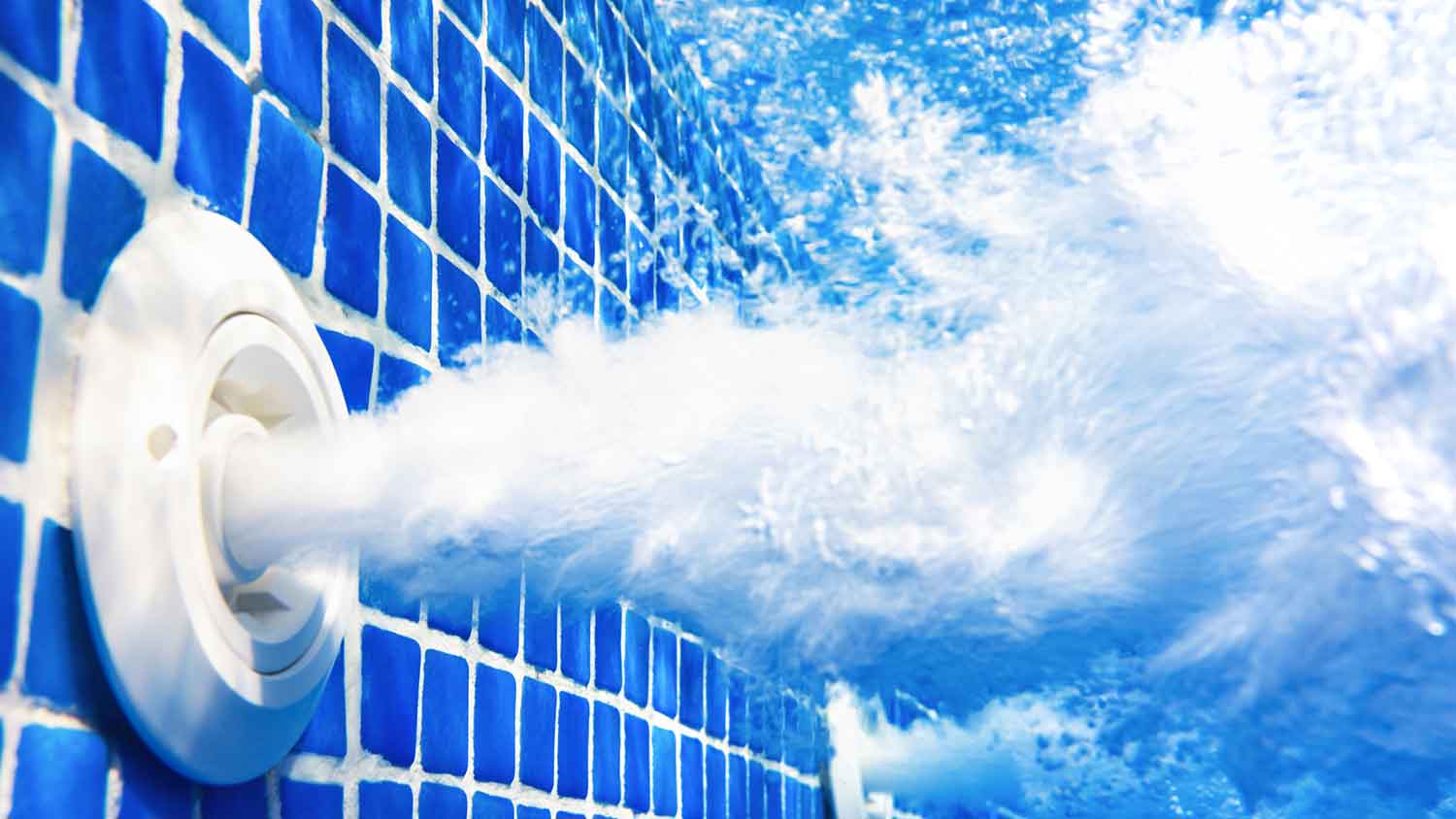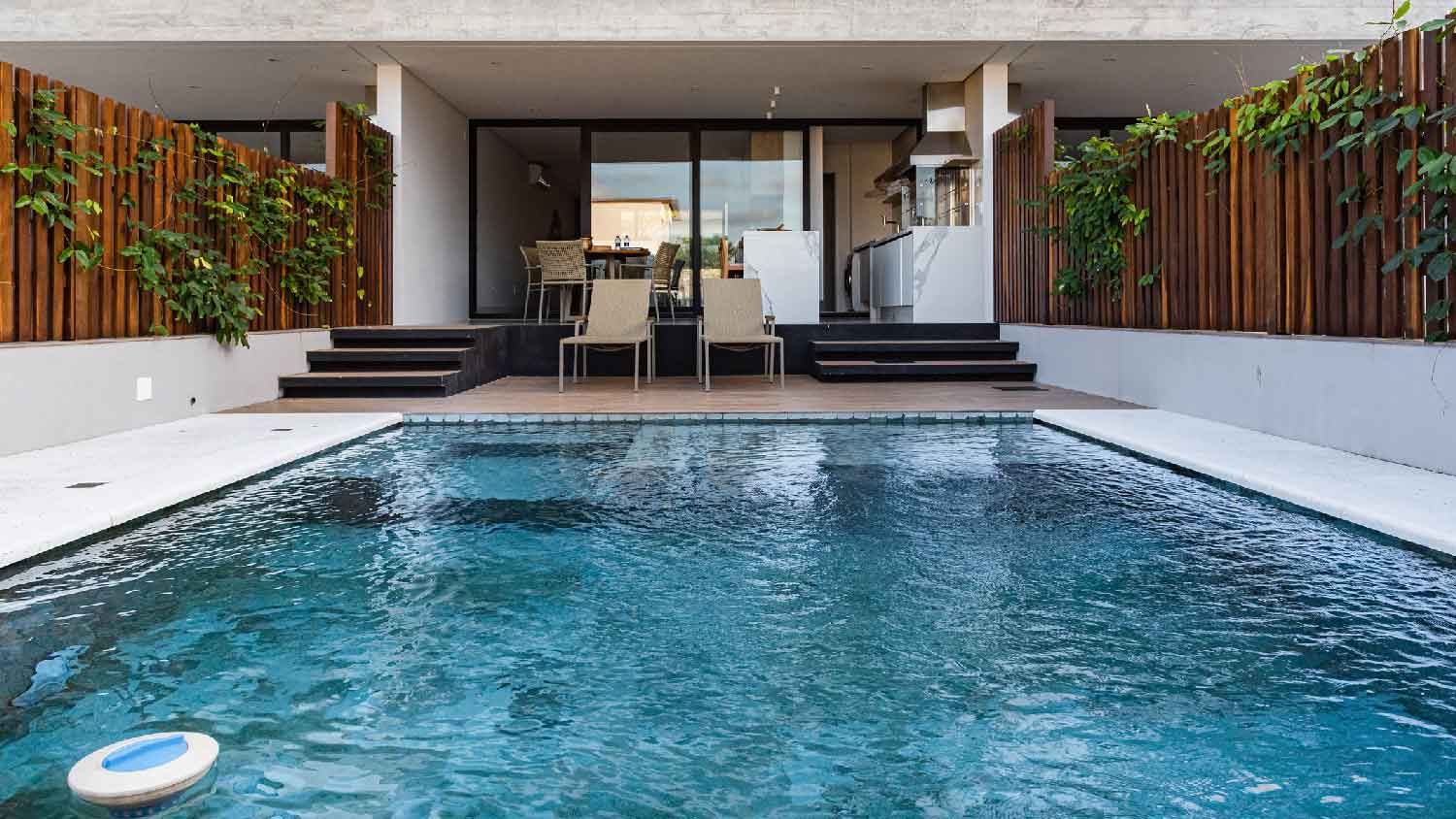
Wondering about hot tub cover costs? Learn what impacts pricing, compare materials, and discover ways to save on your next hot tub cover purchase.
Learn how long you can expect the bubbles to keep flowing


Hot tubs and spas are an investment, and you will want yours to last as long as possible. Here we discuss the question of how long a hot tub lasts on average, when to replace it, troubleshooting tips, and how to keep yours looking good and functioning well throughout its life for your optimal enjoyment.
On average, you can expect a hot tub to last between five and 20 years; however, the length of time and how good it looks and how well it functions during that time is in large part up to you. Investing in a quality spa is a great place to start, but the way you care for your hot tub will be the biggest single factor in how long it lasts.
There are several factors that influence how long a hot tub will last, but there are two that really count—quality and maintenance. Let’s take a look at these most important factors, along with others that can keep your hot tub bubbling long past your expectations.
As with most things, low-quality hot tubs simply are not designed to last as long as higher-quality hot tubs. Hot tubs that are made with premium materials and parts will almost always last longer than those built for a lower budget. While you do not have to break the bank and buy the most expensive hot tub on the market, do consider the overall quality and value of the make and model you choose. Hot tub costs can be an indicator of quality; often, spending a little more upfront on a quality spa means you will not have to replace it as soon.
Next to overall quality, maintenance is the next biggest factor in how long a hot tub lasts. Simply put, the better you care for your hot tub, the longer it will last and the better it will work and look during its lifetime.
Maintenance includes regularly and properly servicing hot tub components, such as filters, vacuums, motors, jets, and other working parts. Along with mechanical maintenance, tasks such as regular cleaning, filter cleaning, water changes, and careful chemical monitoring can keep your spa clean, maintained, and working well for years to come. In fact, some hot tubs can last 20 or more years with top-notch care.
How often you use your tub also influences its longevity. That is because use equals wear and tear, and that impacts life span. If you use your hot tub less often and according to the manufacturer recommendations, it is likely to last longer than a hot tub that gets protracted daily use or takes abuse.
Looking at a portable hot tub or inflatable spa? You should know that they likely will not last as long as other types of hot tubs. In-ground hot tubs and those with sturdy frames, good insulation, and solid construction are built to last longer than inflatable, portable, or entry-level hot tubs.
Your hot tub is only as good as the installation. If the electrical supply is not robust enough, the deck is not sufficiently sturdy, and the hookup is not professionally done, you can count on having problems throughout the life of your spa, ultimately shortening its life span. Installing a hot tub is a job best left to a pro. To get the best outcome, hire a qualified local hot tub installer near you to do the job right.
The climate you live in also affects how long your hot tub lasts. Hot tubs have sensitive working parts that can suffer in extreme conditions, especially sub-freezing temperatures and prolonged sunlight. Harsh temperatures can cause the motorized parts to work harder, and temperature swings and UV light can accelerate wear and deterioration of external parts. Protecting your hot tub from the elements with covers, shade, and insulation will make a difference.
When something on your hot tub wears down or breaks, you must repair or replace it. This will help your hot tub last much longer. From repairing shell cracks and malfunctioning jets, to replacing working parts that break down after constant contact with spa chemicals, the simple act of keeping on top of minor damage can extend the life of your entire hot tub.
The cover you choose can help your hot tub last longer. If you choose a high-quality cover that keeps heat in and debris out, you will lower overall operating costs and help protect your hot tub from the elements and the strain of filtering out leaves and external forces. You can also choose among vapor barriers, cover slips, floating spa blankets, hot tub cover caps and cover guards, and other options to protect your hot tub further.

Everyone wants to maximize their investments, and taking care of your spa is the best way to help it last so you can enjoy the hot tub’s benefits for years to come. The key to a long-lasting hot tub is routine maintenance and cleaning. These are the best ways to make your hot tub last longer so you can enjoy it more and experience fewer problems during its life.
Routine is everything when maintaining and cleaning your hot tub. Most homeowners find it helps to develop a regular schedule for cleaning, maintaining, and inspecting their spas. This can include regular draining, cleaning filters, testing and monitoring chemicals and water minerals, and looking over the hot tub shell and mechanical parts for wear or damage. By having a set routine, you are more likely to catch little issues before they become expensive problems.
No one wants to sit in dirty, smelly, or unbalanced spa water. Along with putting users at risk of illness or infection, it also increases risk of damage to your hot tub shell or working parts. Regularly cleaning the water by filtering, cleaning, and balancing the mineral content and chemicals will make your hot tub water cleaner, clearer, fresher, and less harsh on your skin and your spa equipment.
Depending on manufacturer recommendations and how often you use your hot tub, the general advice for how often to drain a hot tub and refill it is seasonally. This gives you a chance to clean it, look for any problems or damage, and start fresh. This will also help prolong the life of your hot tub because clean water and a regularly cleaned hot tub shell will prevent damage and wear.
You might be willing and able to clean and service your own hot tub; however, if you are not experienced in caring for spas, or if you know you are unlikely to stick with a regular maintenance schedule, it is smart to hire a professional to do the work. Professional spa maintenance and cleaning services can provide refilling, maintenance, chemical monitoring, and other services to keep your hot tub clean and ready to go year-round.
Most quality hot tub manufacturers, including popular brands like Jacuzzi, Twilight, Getaway Spas, Legacy, Master Spas, Bullfrog, and Nordic, include a warranty in the price of their hot tubs and spas. These warranties cover the repair or replacement of parts due to manufacturer defects for a set time, often one to five years.
It is smart to consider warranty coverage when you are choosing which hot tub to buy, as warranties will protect your investment if something goes wrong; however, as a consumer, you should always read the fine print. Learn exactly what the warranty covers, how long it lasts, if it is prorated (meaning, it loses value over time) or expires on a certain day, whether it covers repairs or replacement, who will provide the warrantied repairs, and how you can make warranty claims. You should also know what actions or inactions on your part, such as cleaning or servicing, can invalidate the warranty.

If something goes wrong, your biggest question might be whether you can repair or must replace your hot tub. Hot tub removal costs and replacement can be expensive, but so is running an inefficient, faulty, or ungracefully aging spa. Below are our best tips on when it makes sense to repair versus replace your spa.
For most people, repairing is the best option. This is especially true if the hot tub is newer or if the problem is small. Hot tubs are an investment, and repairing an existing hot tub is almost always less expensive than replacing it. You might want to repair your hot tub if any of the following hot tub problems apply to you:
Your hot tub is less than 15 years old.
Your hot tub or the water has an unpleasant smell.
The water is green, cloudy, murky, or will not stay clean.
It does not hold a consistent temperature.
There are minor cracks that look to be repairable.
Jets lack power or stop working.
A good rule of thumb is to have an expert inspect your hot tub whenever you notice a concern. By having someone look at your spa regularly, you can often repair problems before they get bad enough to warrant replacing your entire hot tub.
Sometimes, repairing just puts a temporary bandage over a bigger problem, and it can cost you more over time to keep repairing a very old or failing hot tub. Here is when to consider replacing your hot tub:
Your hot tub is more than 15 years old.
It is inefficient and costs too much in energy bills.
Repairs will not hold up, or it needs frequent repairs.
It costs more to maintain and repair than it is worth.
The shell is cracked or leaking and not repairable.
Internal components such as jets, filters, pump, and heater are failing.
You cannot get original equipment manufacturer parts or other quality replacement parts for it.
It frequently breaks down, needing more expensive or extensive repairs, or is constantly failing.
You feel that it is time to invest in a new model.
From average costs to expert advice, get all the answers you need to get your job done.

Wondering about hot tub cover costs? Learn what impacts pricing, compare materials, and discover ways to save on your next hot tub cover purchase.

Discover how much installing a steam room costs, including average prices, key cost factors, and tips to save on your steam room installation.

Wondering how much it costs to run a hot tub? Discover average monthly and yearly costs, key factors, and tips to keep your hot tub expenses in check.

Saltwater hot tubs are a great alternative to traditional options. Discover the pros and cons of saltwater hot tubs to see if one is right for you.

Do your pool jets have low pressure? Find out the common causes of low pressure in your pool jets, along with what you can do to fix it.

When you go for a dip in your pool, it should be refreshing, not slimy. Get answers to "why is my pool slimy" and find out how to fix it.